Aerating your lawn is something that I recommend doing at least once a year if you want to sustain healthy grass growth and prevent soil compaction (which often leads to a sparse, patchy lawn – nobody’s idea of #gardengoals).
In this guide, I’ve shared my current step-by-step process for aerating a lawn, including my top recommended method of aeration, and my tips on when, and how often, you should aerate your lawn’s soil.
✅Key Takeaways:
The best way to aerate a small lawn is with a hollow tine aerator, while the fastest and most effective way to aerate a larger lawn is with a petrol-powered aeration machine (which you can hire locally).
To aerate a lawn, make passes of the lawn in a grid pattern with a slight overlap. Aim for a depth of 5-10 centimetres and spacing between holes of 10-15 centimetres.
Consider overseeding and fertilising your lawn after aerating the soil to make the most of your efforts and fast-track your way to a lush, beautiful lawn.
Table of Contents
🤔 What’s The Best Way To Aerate Your Lawn?
I’ve personally found that the best way to aerate your lawn is with a manual lawn spike aerator. You can buy electricity-powered aeration equipment that’s faster and covers more ground, but I’ve found that this equipment isn’t as effective because the spikes don’t drive deep enough into the ground, and nor do they actually remove soil, so their abilities are limited.
I recommend a hollow tine aerator, which forces soil plugs out of the ground, creating large enough holes to effectively alleviate soil compaction and allow water, nutrients, and air to penetrate the grass roots. This tool is better than a regular garden fork because it actually removes soil from the ground.
I currently use the Walensee Lawn Coring Aerator (<Amazon link), and this is what I recommend in my best lawn aerators guide. However, you don’t have to use this exact tool, as long as you choose a sturdy aerator that has plenty of positive customer feedback to support its performance abilities.
The only exception to my recommendation is if you have a large lawn. In that case, a manual lawn aerator tool will take far too long to use, so I recommend renting a petrol-powered lawn aerator. You rent from various renting and hiring companies for around £50-£75 per day depending on availability – just search “rent lawn aerator” and you’ll receive tailored search results for your area.
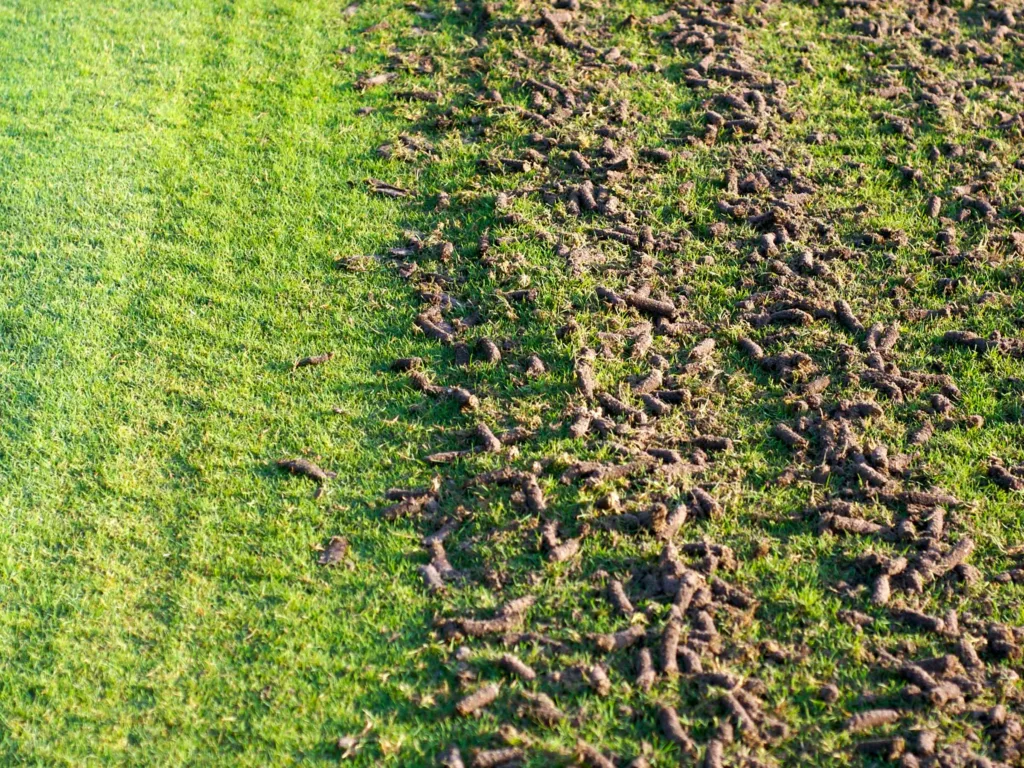
📝 5 Steps To Aerate A Lawn
Here are the 5 steps I recommend to efficiently aerate your lawn:
Step 1: Gather Your Tools
Start by gathering the tools you’ll need for the job.
These are:
Hollow tine aerator
Lawn mower
Garden hose and sprinkler (optional)
Compost or topdressing (optional)
You can rent an aerator if you want, but a manual aerator with hollow tines only costs around £25-£30 anyway, so it’s a pretty solid investment if you use it once a year (as I recommend).
Hollow tine aerator
Lawn mower
Garden hose and sprinkler
Topsoil
✂️ Step 2: Mow Your Lawn
Your first practical task is to mow your lawn to a shorter-than-usual height. Set your lawn mower blade to about 2-4 centimetres lower than your regular mowing height.
Don’t skip this step! I know it’s tempting to get straight onto the job at hand, but taking the time to mow in advance will make it easier for the aerator to penetrate the soil.
You might also need to water your lawn if the soil is particularly dry. From my experience, this is unlikely if you live in the UK and you’re planning to aerate your lawn in autumn, when we tend to see a lot of rainfall anyway.
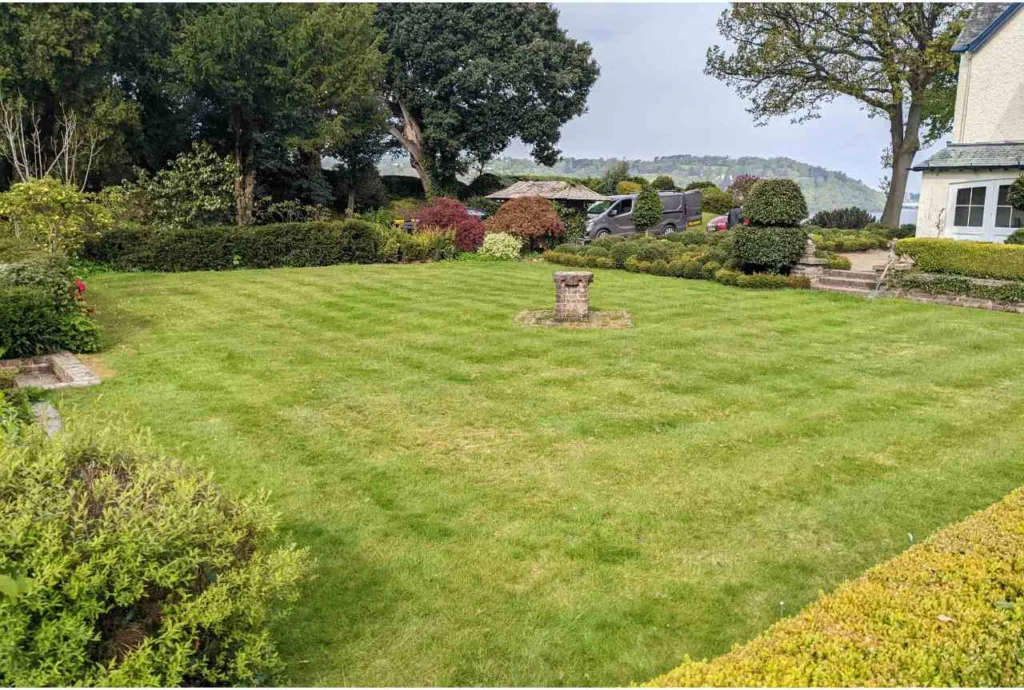
💨 Step 3: Aerate Your Lawn
Now to aerate your lawn! Make passes in a grid pattern, overlapping each pass slightly. The spacing between holes should be approximately 10-15 centimetres, and the depth of the holes should be around 5-10 centimetres.
Using an aerator is simple: push the aerator tines vertically into the soil surface, pressing down on the foot bar to drive them deeper into the ground. When the hollow tines penetrate the soil, they’ll remove and spit out small soil cores.
Tip: You can leave these excavated soil plugs on the soil surface if you prefer. I don’t bother cleaning them up – they’ll naturally decompose and return nutrients to your lawn in the process.
Continue to aerate your lawn in passes, following the same path as you would when mowing, until you’ve covered the entire lawn.
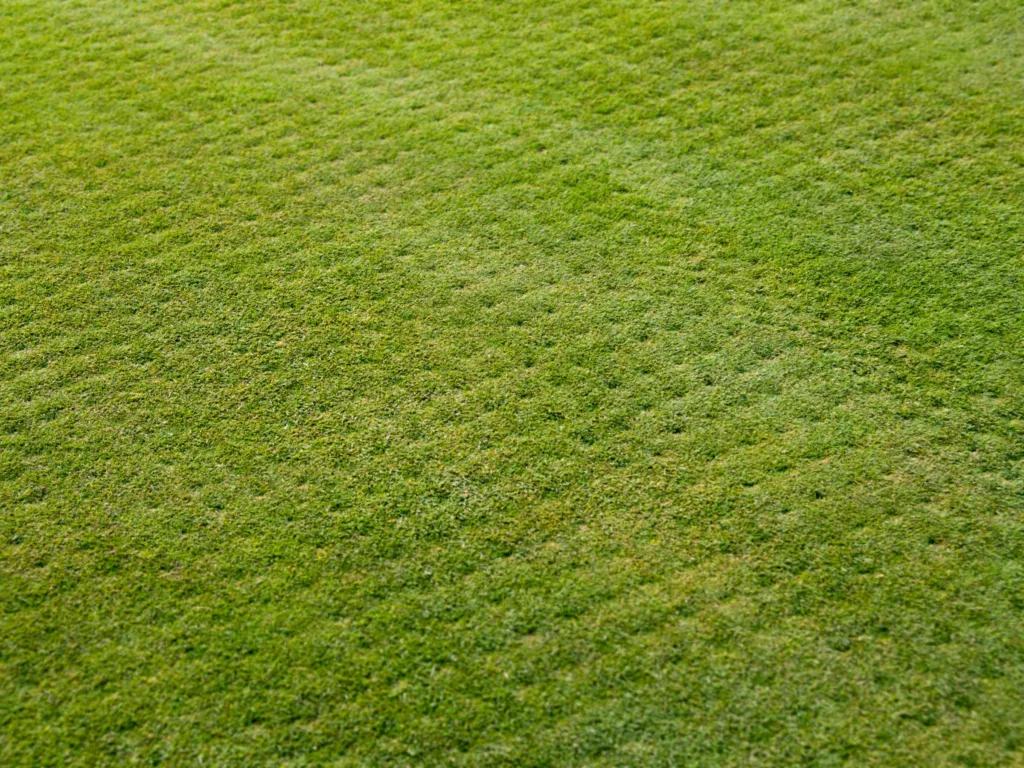
🌱 Step 4: (Optional) Topdress And Overseed Your Lawn
Since you’ve gone to the effort of lawn aeration, now is a great time to topdress and overseed your lawn, especially if you have bare patches.
Spread a thin layer of compost or topsoil over your existing lawn, then sprinkle grass seed onto the sparse areas.
My top recommended grass seed is the Pronto Seed Grass Seed (<Amazon link) because it’s consistently delivered reliable results for me, but you can also go for any other highly-reviewed cool-season grass seed blend from a reputable manufacturer. You’ll usually find a better deal online than at your local lawn and garden stores.
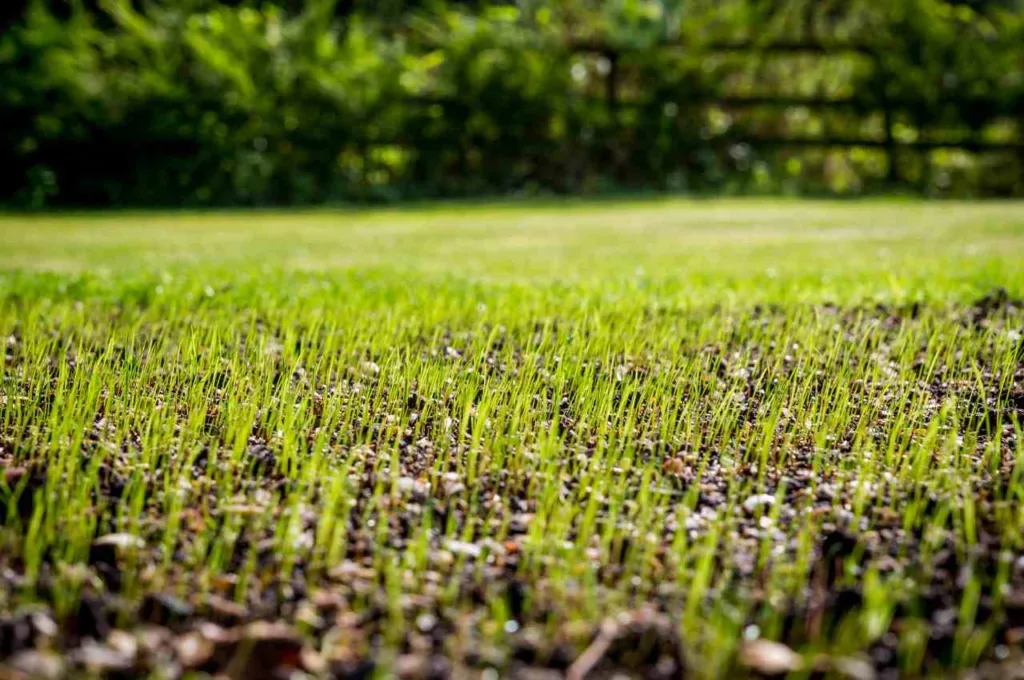
🚿 Step 5: Water And Fertilise Your Lawn
Water your aerated lawn to give instant hydration to your grass roots, which, if you’ve effectively alleviated soil compaction, now have easier access to water and nutrients.
Note: no need to bother watering your lawn if rain is on its way anyway.
I also advise fertilising your lawn, especially if you decided not to overseed. A quality lawn fertiliser delivers a concentrated combination of nutrients to encourage thicker, faster, healthy lawn growth.
Fertilising straight after lawn aeration is a good idea because the grass roots have easier access to these nutrients compared to when you had compacted soil. I recommend an autumn lawn feed if you’re aerating and fertilising in autumn.
And that’s it! There’s no special art to aerating your lawn – you’re just making holes in the ground, after all. Once you’ve learned the process first time round, you’re bound to remember it year after year.
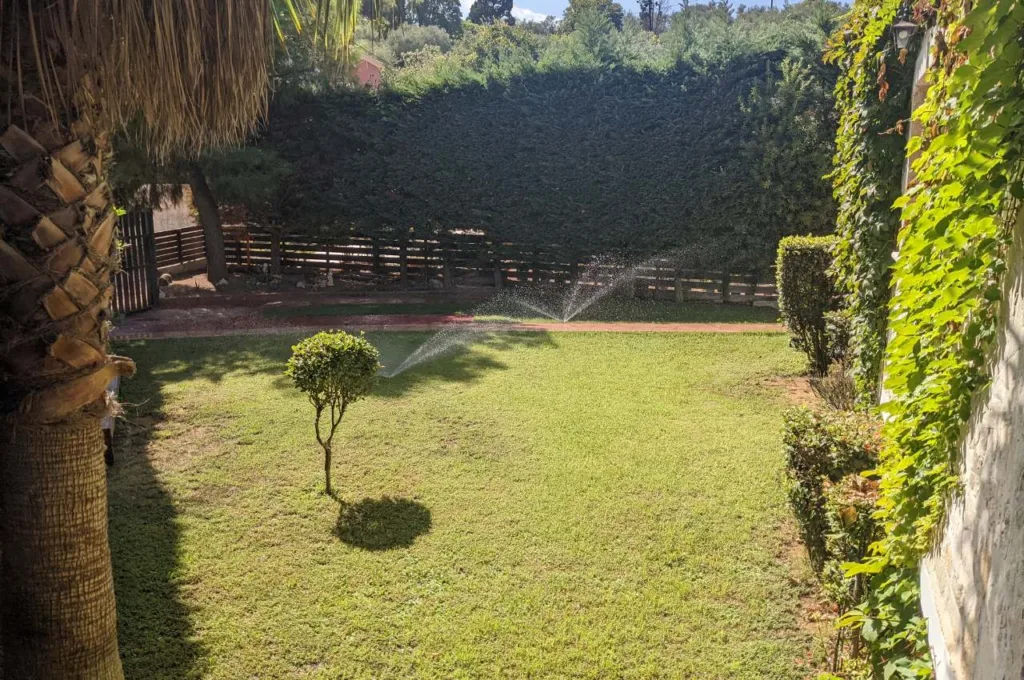
🧐 What’s The Purpose Of Aerating A Lawn?
The purpose of aerating a lawn is essential to promote healthy grass growth by alleviating soil compaction and improving the circulation of air, water, and nutrients to the grass roots.
Aeration enables grass roots to grow more deeply in the soil beneath your lawn. With deeper roots, the grass is able to better withstand stress, diseases, and environmental challenges.
Lawn aeration also enhances the soil’s water absorption, reducing runoff (a common problem with very compacted soil) and conserving water resources. I’ve seen first-hand that aerating a lawn can help to achieve a more vibrant, lush, and resilient turf, and for me, it’s a crucial practice in lawn care and maintenance.
📆 How Often Should You Aerate Your Lawn?
I recommend aerating your lawn once a year, ideally in autumn, when the soil is usually damp and easier to penetrate due to regular rainfall, and after the summer season, when lawns usually see the most traffic.
It’s good practice to aerate a lawn once annually because it prevents the soil from becoming more and more compacted. Lawn aeration is especially important in parts of the UK that have heavy clay soil, namely London and the south-east of England.
Regular lawn aerating makes the job easier for you because there’s less resistance from compacted soils when you’re pressing the aerator spikes into the ground. If you’ve never done lawn aeration before, you’ll probably find it the most challenging on your first go because your lawn will likely have heavily compacted soil.
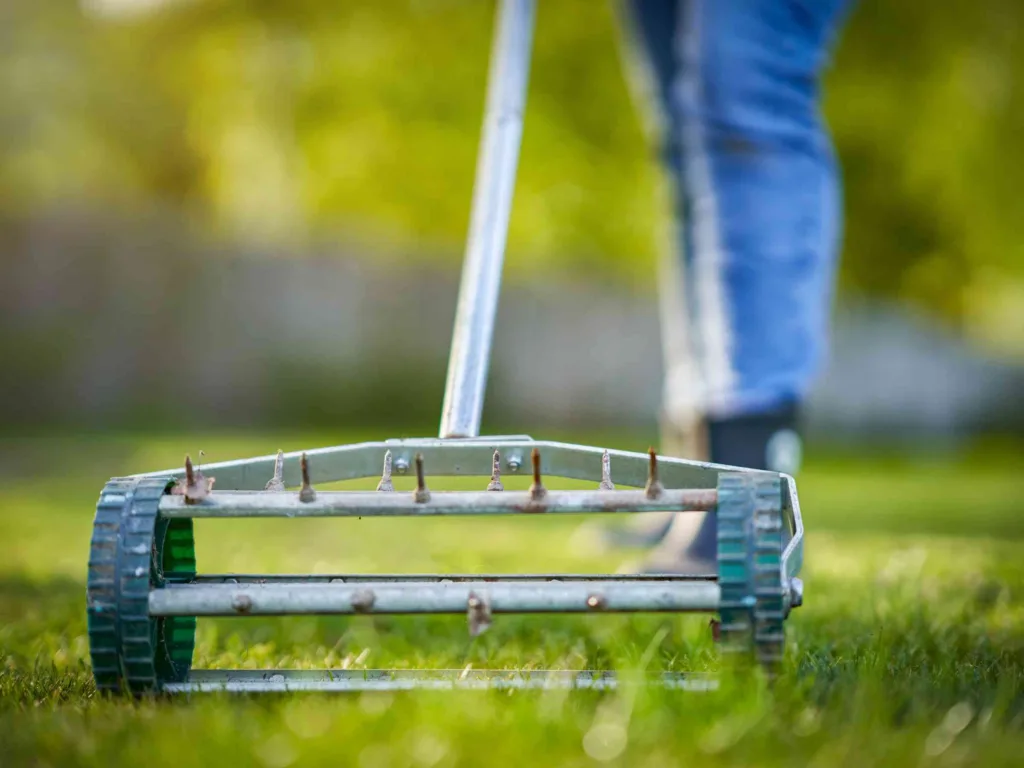
🤷🏻 Should You Aerate Or Scarify Your Lawn First?
Aeration is the process of poking spikes into your lawn (and removing soil plugs if you have a core aeration tool), while scarification is the process of removing the moss, organic debris, and thatch layer from the surface of your lawn using a scarifier or a garden rake.
I recommend that you scarify your lawn first before aerating. The scarification process will remove lawn thatch buildup, giving the aerator better access to penetrate the soil and provide more effective aeration. And that means healthier grass growth and a green, strong, vigorous lawn for you.
🏁 Final Word
I made this guide because I wanted to share my simple, informative step-by-step process to aerate soil on your lawn, and felt that my knowledge as a turf care expert could help me to give additional useful insight. Hopefully, you’ve gathered the information you need to confidently aerate your way to a healthier lawn. Thanks for reading!
